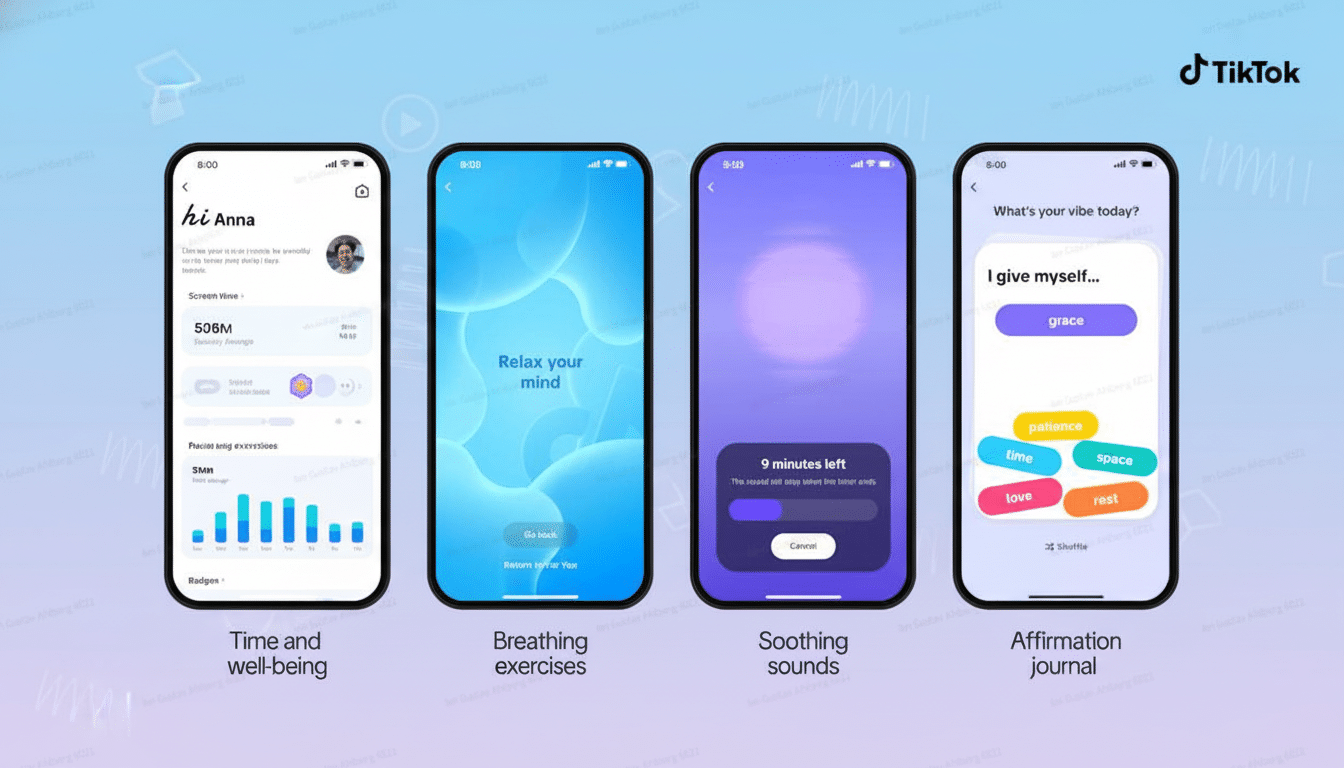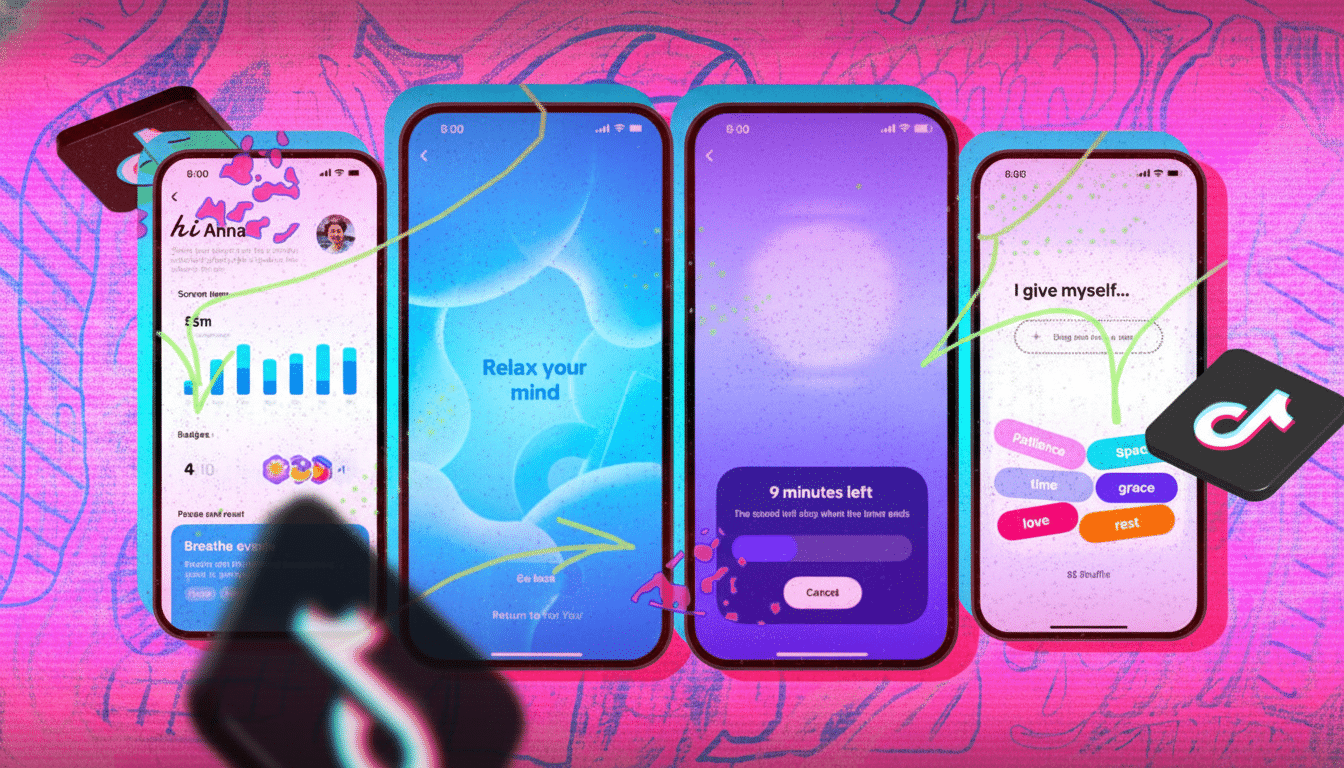TikTok is growing its push into digital well-being with a new suite of features including an in-app affirmation journal and mindful breathing sounds. The rollout situates the video platform as a destination not just to watch and make stuff, but also to set intentions, decompress and regulate time spent on the app.
What TikTok Is Adding to Its Digital Well-being Suite
The digital flagship tool is a 120-card affirmation journal made up of (downloadable or shareable) cards buyers can use as daily prompts and guidance for setting their intentions. Users can tap through prompts, save what they like and post selections publicly if they so desire. Guided breathing exercises and ambient audio options, like rain, ocean waves and white noise for focus or sleep, accompany the journal.

Those tools are now housed in an updated time and well-being section within account settings, taking over the app’s existing screen time management page. TikTok is also bringing out “well-being missions,” task-based nudges that prompt for a healthier routine. A badge is awarded to users who avoid the app at designated night hours or who spend that time meditating on one multi-week sleep mission. A separate weekly mission tracks screen time stats and prompts users to impose limits. Early testing found that users were more likely to return to this hub than they were to the old menu, TikTok says.
A Bid to Comfort Parents and Regulators Amid Scrutiny
TikTok describes the package as a safety and well-being improvement that is particularly intended for teenagers. The company cites strong interest in its meditation feature, which it first turned on by default at night for teen accounts and then made available to all users; tens of millions have sampled it. The signal is clear: structured downtime is being baked into the product.
The push comes as concerns around youth mental health on social platforms continue to draw scrutiny. The U.S. Surgeon General has cautioned that some 95% of teenagers in the 13- to 17-year-old age range report access to smartphones while high use is associated with sleep disturbance and depressive symptoms. According to Pew Research Center, 67% of U.S. teens are estimated to use TikTok and 16% say they use it almost constantly. Dozens of state attorneys general have sued social media companies over alleged harms to young people, ratcheting up the pressure for explicit, quantifiable protections.
Do Affirmations and Mindful Tools on TikTok Really Work?
Are affirmations a magic trick? There’s research to suggest maybe they can assist. Research published in both the journal Social Cognitive and Affective Neuroscience and the Proceedings of the National Academy of Sciences has associated self-affirmation with lower physiological stress responses, along with increases in reward-related brain activity when individuals meditate on core values. Meta-analyses in health psychology find small-to-moderate advantages when affirmations are combined with specific behaviors, such as sleep or exercise patterns.

Design matters, though. Behavioral scientists say vague commitments can feel empty, whereas specific, values-based prompts can engender follow-through. Default choices and reminders at the right moment can also move habits by single-digit percentage points, which account for a lot at scale. That’s the thinking behind TikTok’s missions, badges and nighttime settings: to make the healthier choice the more convenient one than the default scroll.
How It Compares to Competitors in Digital Well-being
Major platforms have added digital well-being features over the last few years. Instagram’s Quiet Mode can silence notifications and auto-respond to messages. YouTube offers bedtime reminders. Apple and Android offer system-level dashboards, daily limits and downtime schedules. TikTok’s gambit is to centralize these controls into a more engaging, single hub, sprinkle in some shareable affirmation posts and gamify adherence with missions and the growth of an in-app “well-being tree.”
The decision to include shareable cards is strategic: It turns a private practice into social content, and it keeps users inside the app. That can drive adherence, but also raises the question among many of its critics: Is wellness in tech primarily about user health or retention? The answer could be a little of both, and the results are likely to depend on whether teens and adults actually use the features and how strong defaults are at preventing late-night scrolling.
What to Watch Next as TikTok Rolls Out Wellness Tools
Experts will seek evidence in two forms: usage and impact. Engagement metrics should tell us how many people set sleep windows, complete missions and return to the well-being hub over time. Impact metrics should include whether sessions of night use decrease, sessions become shorter in total and the overall sleep and mental health that high schoolers report improve. Independent audits — if regulators and researchers help promote them — would provide more credibility.
For users, the practical playbook is simple: establish a nightly downtime, select a couple of affirmation cards that resonate with your own values and pair them with a specific action — like charging the phone outside your bedroom. The convergence of intention, design and friction could be more potent than any on their own — and might be the deciding factor in whether TikTok’s wellness bet does the impossible and moves the needle beyond good intentions.

